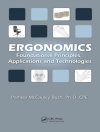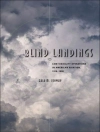GIS Research Methods: Incorporating Spatial Perspectives shows researchers how to incorporate spatial thinking and geographic information system (GIS) technology into research design and analysis. Topics include research design, digital data sources, volunteered geographic information, analysis using GIS, and how to link research results to policy and action. The concepts presented in GIS Research Methods can be applied to projects in a range of social and physical sciences by researchers using GIS for the first time and experienced practitioners looking for new and innovative research techniques.
Содержание
Preface Acknowledgments Chapter 1: Introduction: Why think spatially? Chapter 2: Spatial conceptualization and implementation Chapter 3: Research design Chapter 4: Research ethics and spatial inquiry Chapter 5: Time, sampling, and boundaries Chapter 6: Use of existing digital and non-digital data sources in research Chapter 7: Survey and interview spatial data collection Chapter 8: Public participation GIS and qualitative ethnographic field research Chapter 9: Qualitative ethnographic field research Chapter 10: Evaluative research from a spatial perspective Chapter 11: Field research and data collection for built and natural environments Chapter 12: Conducting the analysis in Arc GIS Chapter 13: Qualitative analysis and results Chapter 14: Communicating results and visualization of spatial information Chapter 15: Linking results to policy and action Chapter 16: Future directions References Glossary Index
Об авторе
Steven J. Steinberg is the Geographic Information Officer for the County of Los Angeles, California. Throughout his career, he has taught GIS as a professor of geospatial sciences for the California State University and, since 2011, has worked as a geospatial scientist in the public sector, applying GIS across a wide range of both environmental and human contexts.












